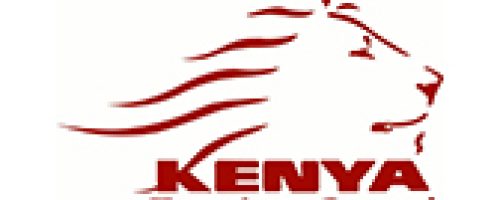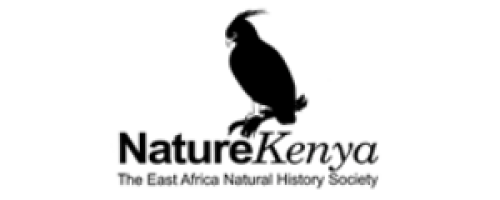| Name of the facility | Naboisho Camp |
|---|---|
| Certification Achieved | Gold |
| Year opened | 2011 |
| Tourism region | Masai Mara/South Rift |
| County | Narok |
| Address | Head Office – Nairobi Map It |
| Telephone/Mobile | 0733291416 |
| [email protected] | |
| Website | https://www.asiliaafrica.com/camps-lodges/naboisho-camp/ |
| Facility Notes | Naboisho camp is located in Naboisho Conservancy situated within the Mara- Serengeti Ecosystem. The camp was established in 2011 and is owned and managed by Asilia Group of hotels. It has eight (8) tents, with a maximum bed capacity of 24. The total work force is made up of 30 employees. The camp is open for 11 months in a year. It is designed to have a low impact on the environment. The canvas tents are beige, and green in colour, and blend in with the natural surroundings. They are raised from the ground on wooden platforms, sand and gravel leaving the natural vegetation relatively undisturbed. The camp is unfenced which allows wildlife to move freely within the premises. The Mara Naboisho Conservancy is a community conservation area measuring approximately 50, 000 acres in size. The conservancy was established in 2010 by approximately 500 local individual Maasai landowners who agreed to lease their land for 15 years to tourism investors. The partnership was spearheaded by Basecamp Limited resulting in the current Naboisho Conservancy. The aim was to conserve the land and wildlife, whilst simultaneously providing revenue for the landowners through tourism enterprises, the conservancy is an integral part of the Mara- Serengeti ecosystem, and is a critical wildlife dispersal area for migratory wildlife, including the wildebeest. The Mara portion of the larger Mara- Serengeti ecosystem supports approximately 92 species of mammals and about 400 species of local birds. It is the largest high altitude grassland in East Africa and hosts the largest population of the migratory Caspian Plover. |
| Energy management | Naboisho camp is mainly powered by solar energy which is fixed with a power inverter battery system. The energy is used for lighting and running refrigerant. It is supplemented by a backup generator. Energy consumption at the camp metered and recorded for monitoring purposes. Water heating at the camp is conducted through 12 solar water heaters (two of 600 liters and 10 with a capacity of 300 liters) – A compliance with section 3 in the Energy (Solar Water Heating) Regulations, 2012. The solar water heaters are supplemented by three (3) energy- efficient kuni boilers. The kuni- boilers use sustainably obtained fuel wood from Mara Beef. Liquefied petroleum gas (LPG) is used for cooking both at the guests’ kitchen. Both LPG and a three- stones jiko are used at the staff kitchen. On energy conservation, the camp has the following measures; • No socket in the guest tents hence a centralized charging point at the guests’ main area. Guests are encouraged to charge their cameras in the game drive vehicles. • Energy saving bulbs is installed throughout • The facility has a charcoal cooler ‘fridge’ for storing fruits and vegetables. • Energy sensitization signage is posted on main user points. • Guests and staff are briefed on energy conservation and efficiency through meetings, memos, posters and guests’ briefing on arrival respectively. • Main switches are easily accessible at the guest (fixed at the entrance) to conserve energy |
| Environmental management | Naboisho Camp is steered by the mother company – Asilia – sustainability policy in its operations. The policy is clearly outlined and shows commitment to achieve sound sustainable practices, promote nature conservation, comply with environmental legislations, enhance staff commitment, minimize waste and promote recycling, reduce carbon emission, promote social responsibility and enhance communication to its stakeholders. The policy is implemented through an environmental management system which is headed by a designated person -Eco-warrior who reports to the manager. The EMS has plans for water, energy, and wastes. An emergency response, and health & safety plan is also in place. Through the EMS, Naboisho camp has set clear monitoring plans for solid waste, water and energy conservation. Records obtained are analysed based on bed occupancy and progress attained shared with staff to sensitize and create motivation on the efforts achieved. |
| Chemical use | The camp uses biodegradable bathroom soaps and solutions in the guest rooms supplied by Cinnabar Green. Fuel (diesel) is stored in a tank with a capacity of 3000 litres. The storage is well enclosed, and non-porous to prevent accidental spillage. Material Safety Data Sheet records for the chemicals used within the facility are available. Gas is bought in 50kg and 12kg cylinders. The gas cylinders are well- caged to prevent possible human or wildlife interference. |
| Conservation Criteria | |
| Community Criteria | |
| Solid waste management | Waste separation at the facility is conducted at source. The bins are clearly labelled and the staff sensitized on waste separation and management at source. Plastic, glass and metallic waste is disposed via Mara Bush House and transported to recycling companies in Nairobi such as Kitengela Glass. Other waste such as tetra packs are reused for planting tree seedlings. Organic waste is composted in a compost pit which is well secured in a tightly lockable pit. Water is bought in 18 litre re-usable water bottles / containers and served in glass jars to reduce on plastic waste. In addition, the camp provides aluminium bottles for use on game drives by guests, aimed at reducing plastic waste. As a best practice, the camp keeps an inventory of generated waste (types and quantity) for waste reduction and monitoring purposes. |
| Water management | Main source of water for the camp is obtained from a conservancy borehole. The water is pumped into a top tank and then stored in three (3) high elevated reservoirs with a capacity of 10,000 liters each. Further rain water harvesting is conducted at the staff kitchen to supplement the water obtained from the borehole. The facility has an approximate storage of 20,000 litres of harvesting rain water. Water is metered at main inlet and outlet and recording done on daily to monitor its consumption. On water saving; • The guest tents are fixed with water efficient dual flash toilet cisterns. • Guests are sensitized about the camp’s water conservation efforts by the camp manager upon arrival and through water conservation signage at the camp. |
| Visitor communication & education | Naboisho Camp has a visitors’ resource area (located at the main tent) equipped with reading materials including environmental publications, wildlife and travel magazines, and nature conservation magazines such as Africa Geographic, Books on Kenya, Birds of Kenya. Mammals and bird list to sensitize visitors on the environmental values, and conservancy operations and activities. Guests are briefed upon arrival on the environmental principles and values of the camp, camp operations and the Conservancy. They are also engaged in learning activities which include; game drives, game walks, village visits, bird watching and nature walk safaris – walking safaris are also aimed at reducing the carbon footprint of the camp. Information on wildlife conservation projects such as the Mara Lion and Mara Predator projects is shared with the guests. Booklets and room information sheets are available at the resource information section and guest tents respectively. |
| Pollution | The path-lights are lit by lanterns to reduce light pollution while the generator has a sound proof casing to reduce on noise pollution. The fuel store is well enclosed in a concrete area to contain oil spills. |
| Environmental conservation | Naboisho camp is built on low environmental footprint and blends in with the local surrounding. The tents are made of green and beige canvas fitted with makuti thatching. Additionally, the facility is unfenced to allow wildlife to roam freely. Also, footpaths are demarcated using gravel stones. The natural vegetation is relatively undisturbed. Further, the facility conducts low environmental impact activities such as nature and game walks, bird watching and village visits with a qualified camp guide and naturalist for its visitors. The activities are aimed at sensitizing the visitors on the surroundings. The camp is located within Naboisho Conservancy and plays a significant role in the conservancy operations by paying monthly conservancy lease, and bed night fees. In addition, it partners with the conservancy on wildlife monitoring initiatives; this include Mara Predator Project and. Mara Lion – These involves visitors and guides to monitor the cats, record sightings and other information for the projects. There is also an awareness creation and mentoring program for nearby schools (Olesere and Mbitin primary schools) whereby students are offered game drives and sensitization lectures on wildlife and nature conservation issues. Through Masai Mara Wildlife Conservation Association the camp hosts researchers at the camp for sensitization to clients on conservation issues. |
| Waste water management | Effluent from the guest kitchen flows through a grease trap to filter out oils and grease before draining into a soak pit. Grey waste water from the guest tents and staff quarters is managed via six (6) soak pits. Black water within the facility, guest area, public areas and staff quarters is managed through a septic tank system. EM1 (Effective Microorganisms) is added to enhance sludge digestion. Water effluent tests have been conducted in compliance with Environmental Management Co-ordination (Water Quality) regulations of 2006. |
| Purchasing and supplies | The camp has a procurement policy in place. Staff food is bought in bulk to reduce on packaging while guest food is purchased on demand. Fruits and vegetables are packed in re-usable crates whereas meat is packaged in cool boxes. |
| Employment and remuneration/staff welfare | Employees are registered under KUDHEIHA (Kenya Union of Domestic, Hotels, Education Institutions, Hospitals and Allied Workers). There is also a staff welfare committee which handles and addresses staff issues to the management. It meets on monthly basis. |
| Staff education, communication and awareness training | The facility has a Lobster Ink training program designated for its staff. Lobster Ink is an online hospitality education system that educates staff and management within the hospitality industry on international accepted standards and product knowledge. The camp has notice boards fixed within for staff communication. Employees are sensitized and briefed during departmental/daily meetings. |
| Cultural preservation and promotion/protection of local sites | Naboisho Camp has designated a curio shop within the premises where guests can purchase curios and artifacts. Curio supplies are purchased from the Maa Trust and sold to clients at the camp. Approximately KES 1,287,523was obtained from village visits in the year 2015 and 2016. Through the Maa Trust the facility periodically organizes for open market days/ “camp soko” within the camp, whereby the local women come and sell bead products to guests at the camp Visitors within the facility are offered local village visits. The system in organized in such a way no cash payments is exchanged. – Each guest pays KSh. 2500 (KSh 1500 is channelled to the community they visit whereas KSh. 500 is donated to the community bursary fund.) Approximately $8,157.50 was obtained from village visits in the year 2015-2016. |
| Benefits to local community/community empowerment | Naboisho camp has an elaborate Corporate Social responsibility (CSR) Plan. The facility engages in various initiatives, these include education, health, community projects and conservation initiatives. • Education; the camp provides bursaries to needy students through the Maa Trust (currently supporting pupils at Olesere and Mbitin primary schools). The camp sponsors guides (particularly female guides) from Koiyaki Guiding School – currently supporting two (2) ladies and (2) pupils at a boarding primary school. • Conservation education; the camp involves pupils from Olesere and Mbitin primary schools in conservation initiatives through game drives and interaction on conservation issues within the conservancy. Also through KWT the camp supports the Mara Lion Project. • Water Project; through guest donation, the facility has managed to buy a 50 litre water tanks for Mbitian School. • Text Books; Through Maa Trust, text books are supplied and displayed at the facility aimed at encouraging clients to buy text books for pupils in the schools. • The camp is a member of the “Pack for a Purpose” where visitors are encouraged to donate items needed by the communities. Donations made to nearby school such as Mbitin include learning materials, and stationery. |
| Cultural Criteria | |
| Health and safety | Naboisho camp has a Health and Safety policy in place committed to continuous improvement and compliance with legal requirements hence ensuring a safe and healthy environment for staff and guests. There is a core team trained on Occupational Health and Safety. In addition it has an occupational health and safety team as required by Legal Notice No 31 of 2004. Also, the camp has a Health Clearance Certificate from the Ministry of Public Health and Sanitation. Verified documents also revealed a team of staff has been trained on Fire safety skills and a team of 24 staff trained on fire fighting skills and a team of six (6) trained on first aid. First aid kits are evenly distributed and accessible at the main departments such as kitchen, staff quarters and the office. The facility is subscribed to AMREF Flying doctors for Emergency services. Medical check-ups for kitchen staff (food and beverage handlers) are conducted every six months to ascertain their health fitness in compliance with the Food, Drugs, and Chemical substances Act. Cap 254. There is an emergency plan with clear spelt out procedures on fire evacuation, fire prevention, robbery, and medical care. An emergency response contact list is mounted at the staff notice board. The guest tents are equipped with handheld radios and horn for emergency. Flash lights are issued in case of blackouts. Fire-fighting equipment including fire extinguishers and fire blankets at the kitchen are duly serviced and strategically placed within the facility. The camp provides PPE (Personal Protective Equipment) such as overall, gloves and boots to the staff. Fire assembly points are properly marked and displayed within the camp and a fire alarm has been fixed for fire emergency response. On legal compliance, the camp has conducted a fire audit, risk assessment and a health & safety audit to comply with occupational health and safety regulations. |
| Child labor, abuse and human rights | The facility adheres to the legal employment age. |
| Business Practises Criteria | |
| Entry Date | 10th November 2017 |

















